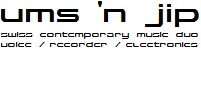2018 __ Italy Project
![]()
![]()
PROGRAM
Simone Conforti
WhatAreWeWaitingFor, 2018
Simone Conforti
WeWillNeverBeGreatAgain, 2017
Maurilio Cacciatore
Tutorial 1#:mimesi, 2018, world premiere
Federico Costanza
Storia ignota di un segreto nervo rivoluzionario, 2018,
world premiere
poems by Anna Laura Longo
Andrea Damiano Cotti
Lo-li-ta!, 2018, world premiere
Variazioni su un tema di Vladimir Nabokov
Luciano Berio
Gesti, 1966
Stefano Gervasoni
Romper del dia, 2014
poems by Jose Angel Valente
arr. for recorder and voice, 2018, world premiere
![]()
IDEE
Das Italy Project bringt einerseits Werke der jüngsten
italienischen Komponistengeneration zusammen und spiegelt
sie an neuen Werken der Etablierten. Alle Werke (mit
Ausnahme von Berio) stammen von Komponisten, deren Arbeiten
UMS 'n JIP seit mehreren Jahren kennen, bzw. die seit
mehreren Jahren mit dem Duo zusammenarbeiten.
Live-Elektronik, Fluxus, Performance, Musiktheater und
Konzeptkunst wechseln sich mit klassischen
Kammermusikformaten ab, so dass das Programm ein
intermediales und multidisziplinäres Panoptikum des
italienischen Musikschaffens bietet.

with Federico Costanza (and Beat Furrer, Haris Kittos, Mateu Malondra a.o.), Pelion/GR, 2010
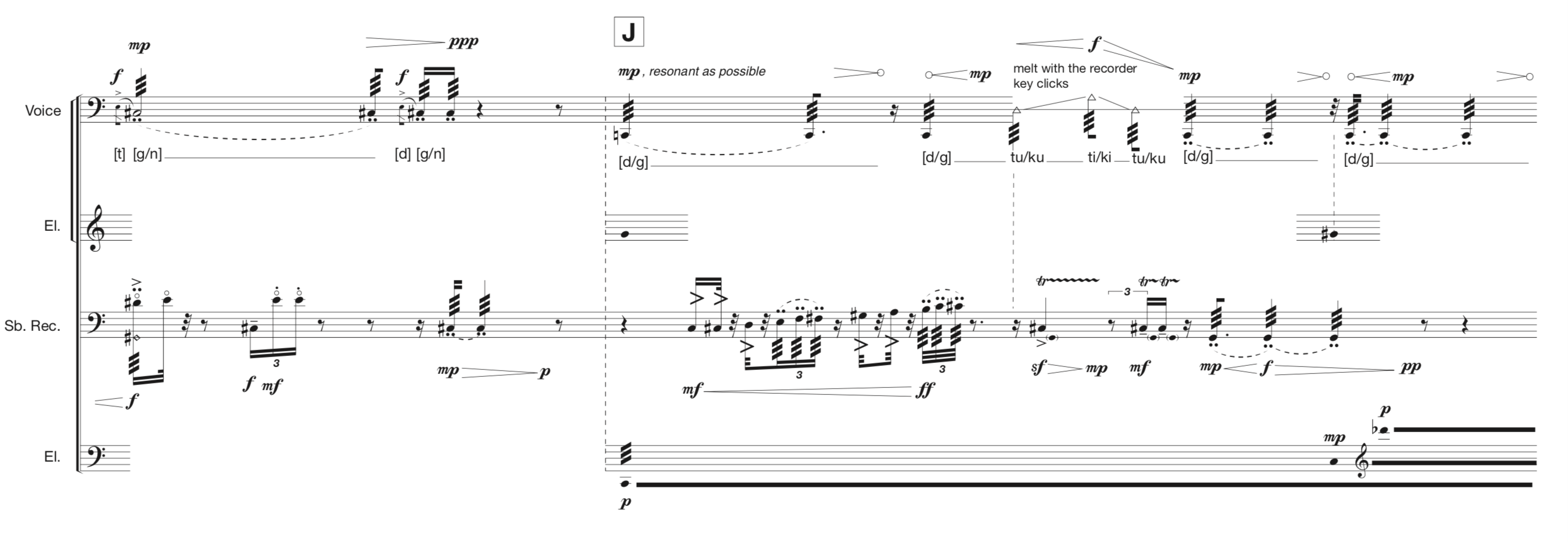
with Maurilio Cacciatore, Ackermannshof Basel 2017

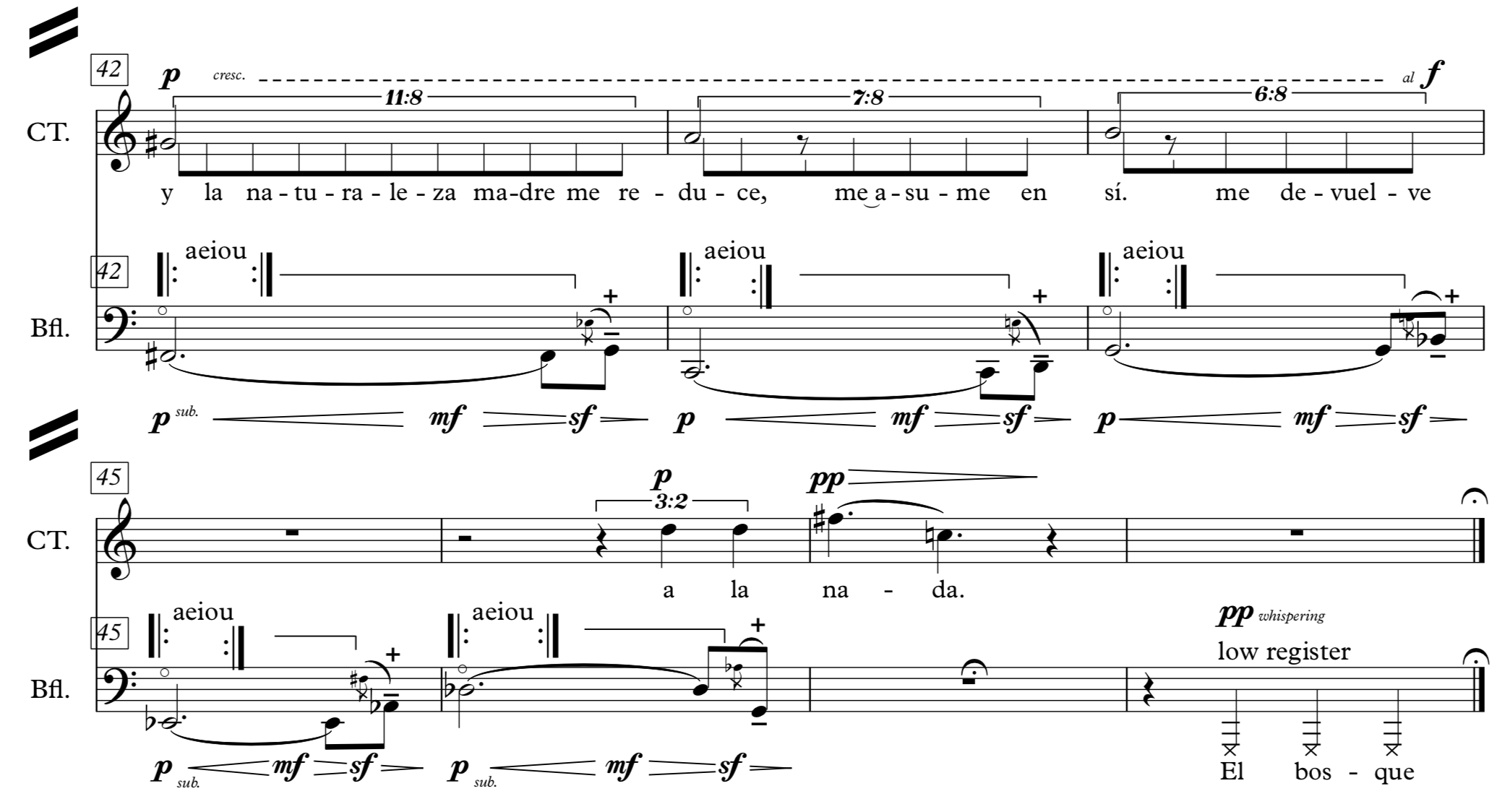
with Stefano Gervasoni (and Wen Deqing), Shanghai New Music Days 2009
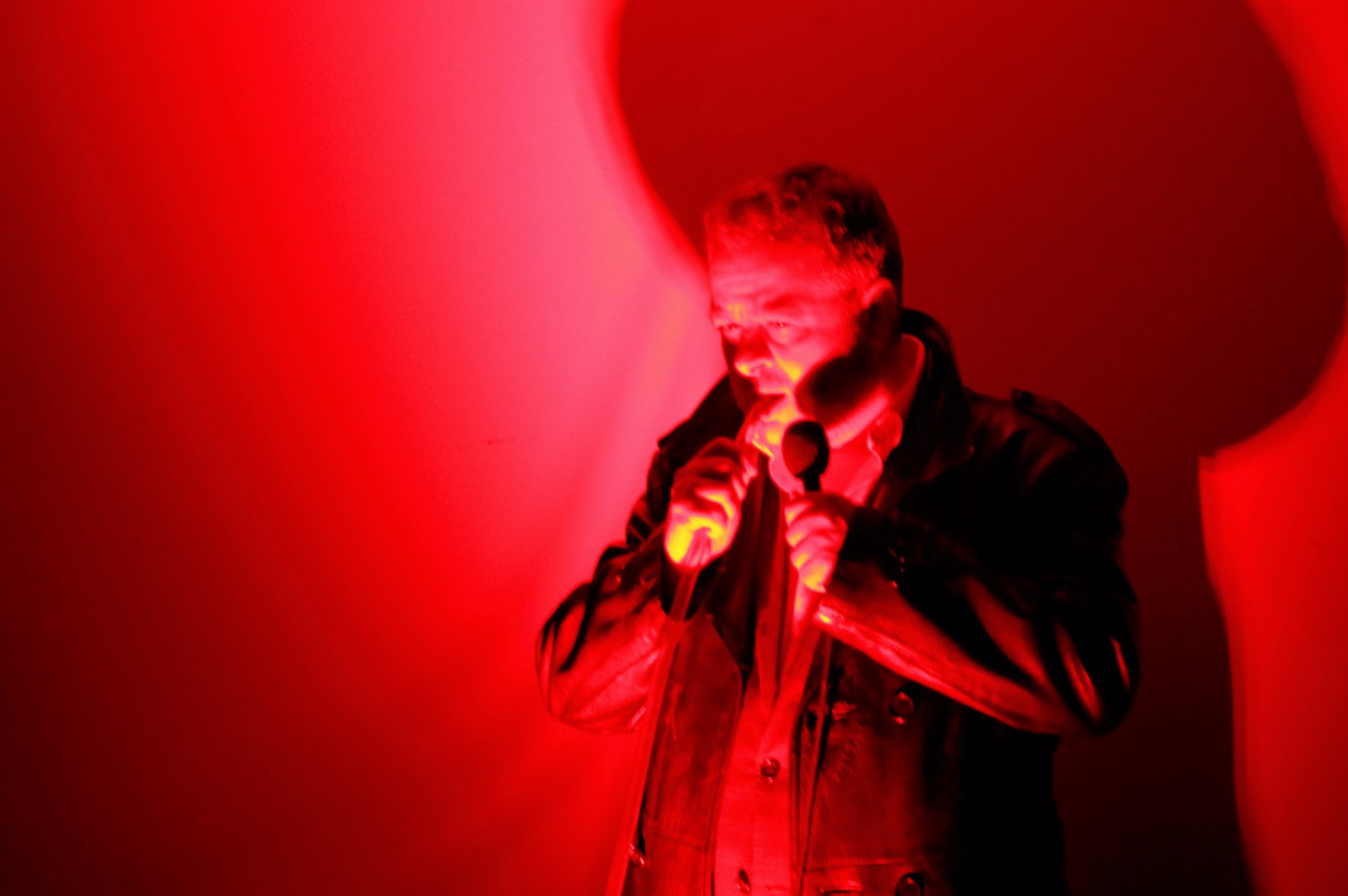
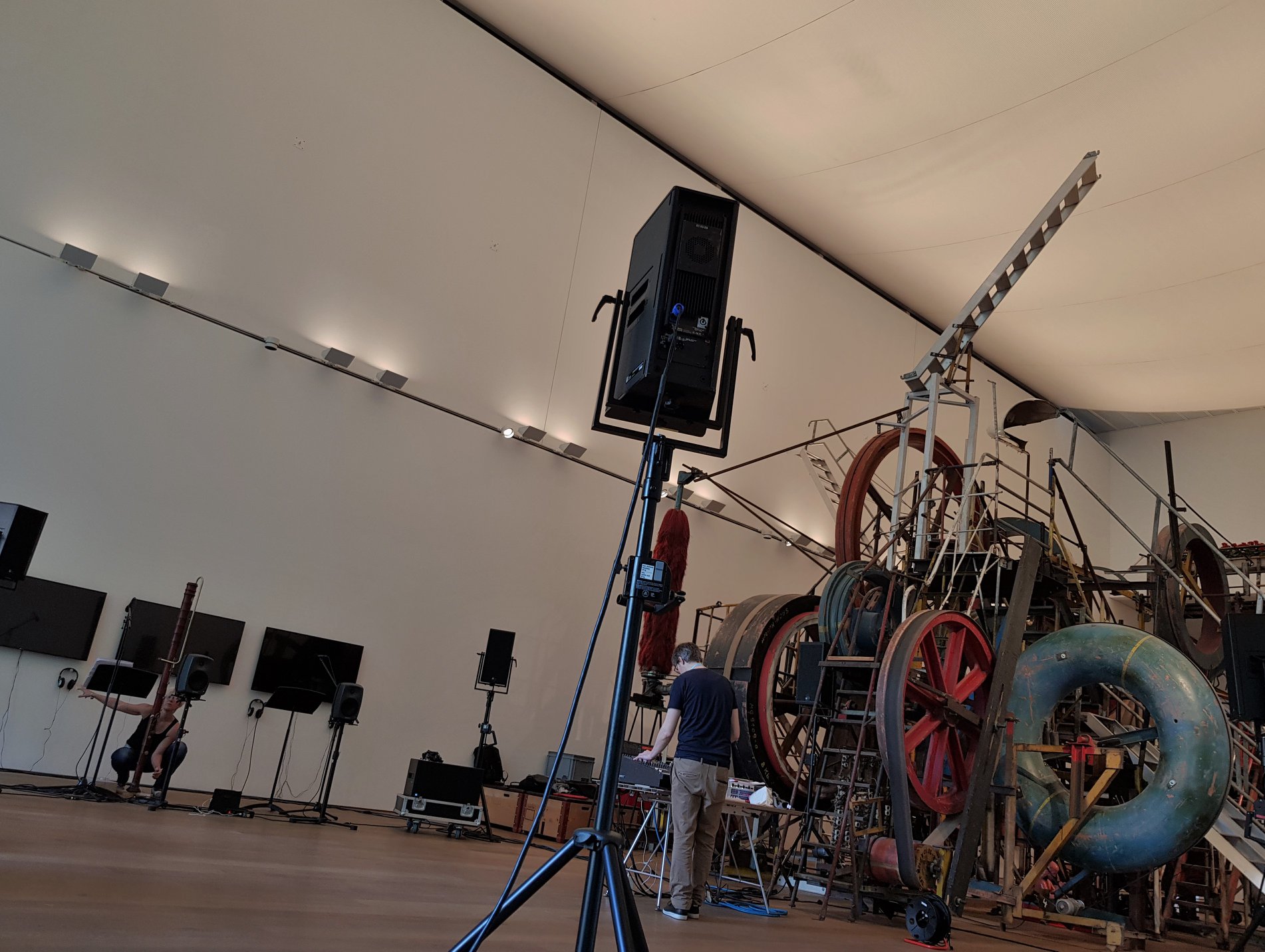
with Simone Conforti, Unternehmen Mitte Basel / Festival Archipel Geneva 2017
SKJU Burgerspittel Leuk 2018 / Tinguely Museum Basel 2018
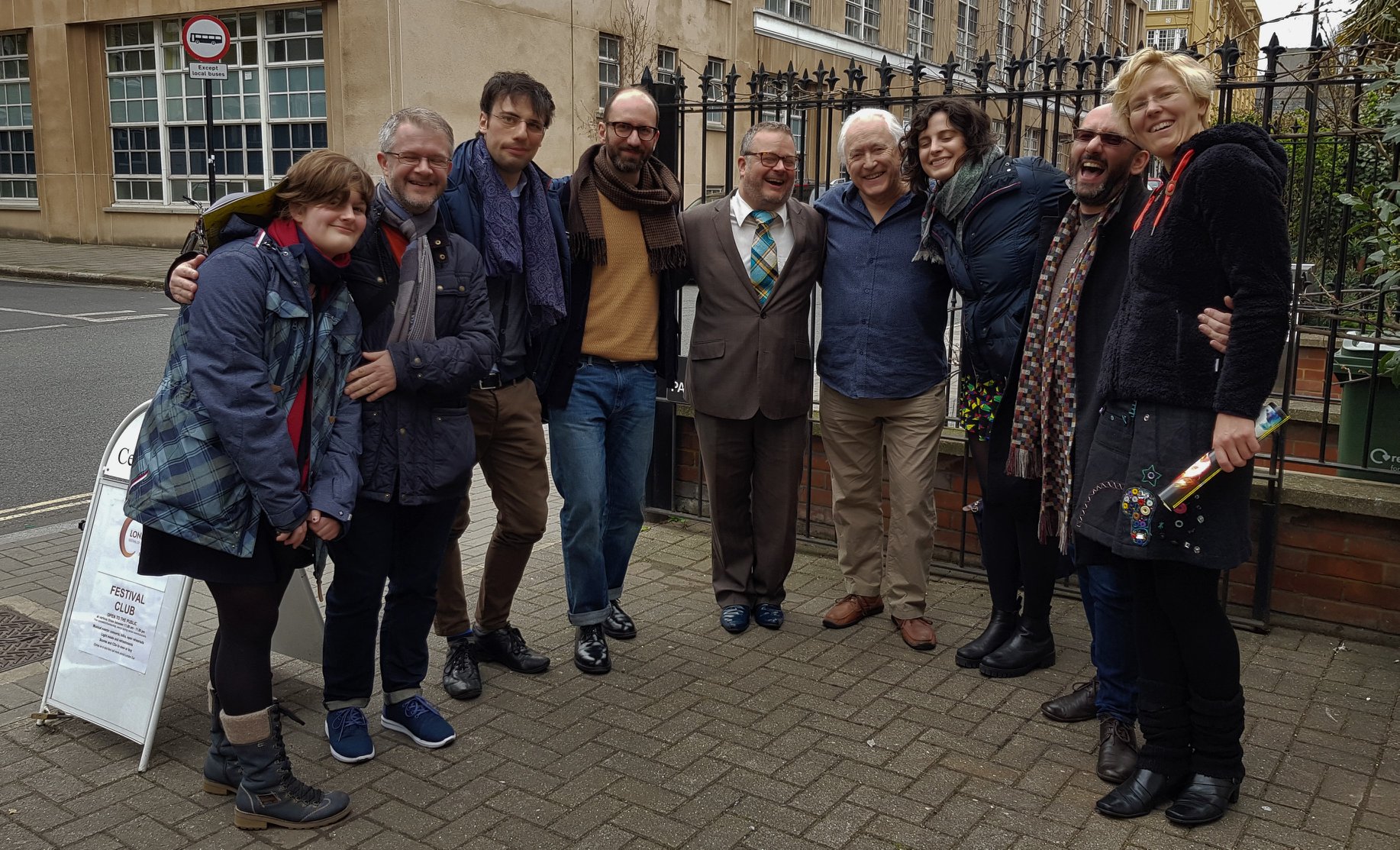
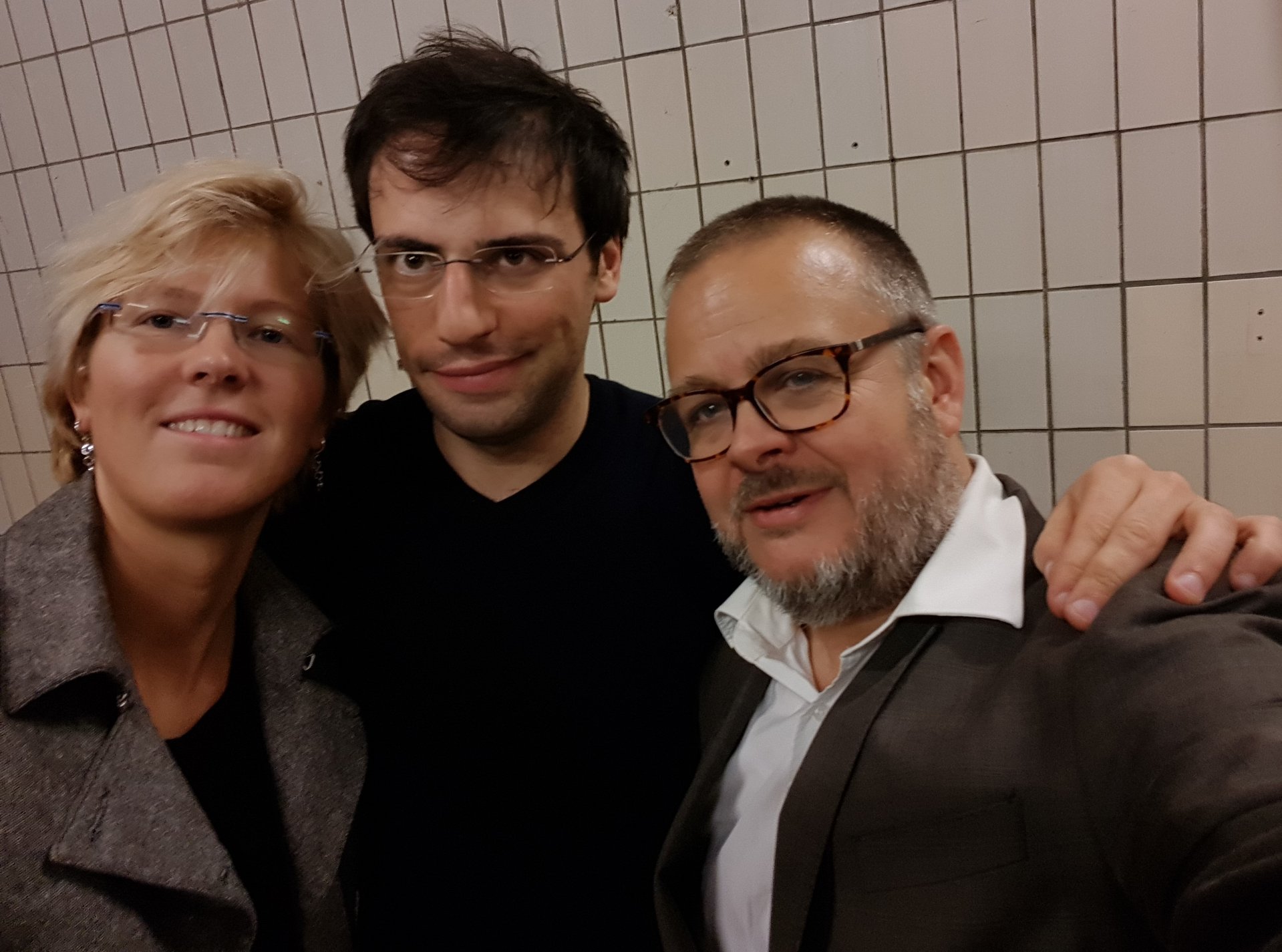

with Andrea Damiano Cotti (and Haris Kittos, Gwyn Pritschard, Dimitris Exarchos), London Ear Festival 2018
![]()
COMPOSERS
Born in Bergamo in 1962, Stefano Gervasoni began studying composition in 1980 on the advice of Luigi Nono: this encounter, as well as others with Brian Ferneyhough, Peter Eötvös and Helmut Lachenmann, turned out to be decisive for his career. After attending the Conservatorio Giuseppe Verdi in Milan, Stefano Gervasoni studied with György Ligeti in Hungary in 1990, and then, in 1992, he attended the IRCAM Course in Composition and in Computer Music in Paris. The first three years in France launched Gervasoni's international career that eventually led him to be artist-in-residence at Villa Medici in Rome for the biennium1995-1996. With commissions from prestigious institutions such the WDR, the SWR, the Orchestra Nazionale della RAI, the Münchner Kammerorchester, the Festival d'Automne in Paris, Radio France, IRCAM, the Casa da Musica in Porto, the Festival Archipel in Geneva, the Divertimento Ensemble in Milan, the Ensemble Intercontemporain, the Ensemble Modern, the Ensemble Contrechamps in Geneva, the Maerzmusik festival in Berlin, the Ars Musica Bruxelles, the Festival Musica in Strasbourg, the French Ministry of Culture, Milan Teatro alla Scala and Suntory Hall in Tokyo, Stefano Gervasoni has established himself as one of the most important Italian composers of his generation. His catalogue – which includes chamber and vocal music, concertos, works for orchestra, for ensemble and an opera (Limbus-Limbo), commissioned for the 50th anniversary of the Percussions de Strasbourg (2012) – was first published by Ricordi, from 1987, and then, from 2000, by Suvini Zerboni. A monographic CD entitled Antiterra, which features the pieces An, Animato, Antiterra, Least Bee, Godspell, and Epicadenza, released in 2008 by Aeon, bears witness to «a sonic world of great wealth, subtlety, refinement, expressive but also organic, that immediately captures one’s attention» (Philippe Albèra). Other monographic recording collections include the Harmonia Mundi CD in the series Musique Française d'Aujourd'hui (Ensemble Contrechamps), the Stradivarius CD by Divertimento Ensemble and the CD Dir-in dir released in 2014 by Winter & Winter (Académie Charles Cros price and Diapason d'or in France). A recent CD by Winter & WInter, released in 2016, entitled Le pré includes the three books of a piano cycle. Winner of numerous prizes, including the recent Premio della Critica Musicale "Franco Abbiati" (2010), his work has allowed him to be a grant-holder at the Fondation des Treilles in Paris (1994) and at the DAAD in Berlin (2006) and composer-in-residence at the Domaine de Kerguéhennec during the period 2008-2010. He has also been invited to teach at the Darmstadt Ferienkurse, on the courses organised by the Fondation Royaumont (Paris), at Toho University in Tokyo, at the Festival International di Campos do Jordão in Brazil, at the Conservatory in Shanghai, at Columbia University (New York), at Harvard University (Boston) and at Takefu International Music Festival. He has been composer-in-residence at Lausanne Conservatoire (2005) and at Yellow Barn Summer Academy (Vermont, 2016). Moreover, he has been visiting professor at ESMUC in Barcelona for the 2012-13 academic year. Since 2006 Stefano Gervasoni has held a regular teaching post as professor of composition at the prestigious Conservatoire National Supérieur de Musique et de Danse in Paris. The musicologist Philippe Albèra wrote a substantial book on Stefano Gervasoni's work, Stefano Gervasoni. Le parti pris des sons, published in 2015 by Editions Contrechamps (Geneva).
http://www.stefanogervasoni.net/
Federico Costanza is composer and sound artist/maker. He
has been graduated in Piano, in Composition and in
Electronic Music (with Alvise Vidolin) at the Music
Conservatory of Venice. Artistic residence at ZKM
Institute in Karlsruhe. Several courses, as
composer, with S. Sciarrino, B. Furrer, P. Billone,
M. Levinas, T. Murail, G. Manzoni, A. Di Scipio, A.
Richard, etc. Performances of his works at:
Spazionovecento XXIV in Cremona 29° Cantiere
Internazionale d’Arte di Montepulciano, ASTRA
Concerts in Australia, Biennale Musica di Venezia,
XVIII Colloquium on Musical Informatics in Turin,
Music Village 2011 in Greece, Art’s Birthday ZKM/HfG
and SWR radio, Radio UNAM in Messico City,
Music@villaromana in Florence, Arizona State
University, Symphonic Season of Teatro La Fenice,
Musica/Realtà Festival in Milan, #Siena2015Lab at
Accademia Chigiana, at PLIVKA in Kiev, etc. His
music and project has been performed by: Lugano
Percussion Group, Mircea Ardeleanu, Young Janácek
Philharmonic Orchestra, Anna D'Errico, Kreutzer
Quartet, DissonART ensemble, Beat Furrer, Liminar,
ASU Contemporary Percussion Ensemble, Orchestra La
Fenice, Stefano Montanari, Ex-novo ensemble, Alfonso
Alberti, Luigi Gaggero and Ukho esemble etc.
Commissions received from some institutions such as:
Cantiere Internazionale d’Arte– Montepulciano; Astra
Society–Melbourne; La Biennale di Venezia; Infidi
Lumi Company; Scuola di Musica di Fiesole, arTree
company, Fondazione Teatro La Fenice di Venezia,
Associazione Nuova Consonanza of Rome, M° L.
Pestalozza president of Associazione Amici di
Musica/Realtà of Milan, etc. Collaborations and
musical compositions for dance projects as:
Twothousand | All! by Kinkaleri and performed in
Florence; VN Serenade by dancemaker Cristina Kristal
Rizzo and performed in LAC Lugano. And for
theatre/performance/ installation projects by
Stefano Tomassini. He has been invited by INCOMMON
at the symposium La Lotta per il Teatro # 01,
dialogues and meetings on contemporary performing
arts, where he performed a concert with his electro
acoustic music at the IUAV University of Venice.
Some of his works are published and recorded by Ars
Publica Edition, Report #00, Rivo Alto and
broadcasted by Radio UNAM (Messico), SWR2 (Germany),
Rai Radio3 (Italy). He is working on some projects
around the amplified toy piano, and the focus is the
development of the relation between the instrument
and the figure of the “composer/performer/maker”.
His musical and spatial research of sound is
conceived as a continuous experimentation that does
not allow an axiom or an opportunity and are
manifested both in his electronic compositions or in
his purely acoustic writing.
http:// federicocostanza.wix.com/home, http://soundcloud.com/ federico-costanza
Storia ignota di un segreto nervo rivoluzionario (2018 – first version) for amplified voice and electronics on poetic texts by Anna Laura Longo. A voice in a desert and in a large space, is searching for the “sound of a poetic word". Alchemical-sonorous maps are used to find a new time, a different practice. A listening and encounter/performance with the Listening itself. These maps of an unknown tale of a secret revolutionary nerve, are based on the poetic writings by Anna Laura Longo, words and traces that invite to cross thresholds. More and more, I believe, poetical thinking - in all its manifestations - is today necessary to cross thresholds and change things.
1. Suolo di protuberanze e(t)
spremo e(t) spargo passo alato (taken from
Procedure esfolianti, 2011, Manni edition.)
2. La spinta viene da terra
nel vortice così come nel nervo
di una causa rivoluzionaria.
La spinta viene da terra,
malgrado la terra blindata.
(taken from PLASMA – Sottomultipli del tema
“Ricordo”, 2004, Fermenti edition.)
Maurilio Cacciatore’s
music stems out of a combination of acoustical instruments
with tools for digital music. It also incorporates
electromechanical objects and uses various resources of
informatics. It results in complex, multi-layered texture,
presenting on the surface classical instruments and
electronics, while containing an inner core of
hybrid and non conventional techniques. Beyond the
conventional standard of spatialization, Maurilio
Cacciatore’s loudspeaker setups explore non-coded solutions
that integrate hardware and software within various musical
contents. The theatrical dimension of his works tends to
integrate visual aspects and music into the score, seeking
an improvement of communication among the players on stage.
He has been composer in residence at the Studios of the
Ircam, the ZKM, the Muse en Circuit of Paris and the
Elektronisches Studio Basel. He has been student of Fabio
Cifariello Ciardi and Ivan Fedele, always obtaining the
beast marks in Italy, Sweden and France. He is currently
working toward a PhD at the Catholic University of Porto and
the Academy of Music of Basel under the guidance of Erik
Oña. He is lecturer of Electroacoustic Composition at the
Conservatory of Castelfranco Veneto (Italy). Maurilio is
active as composer, professor and researcher in Europe,
Asia, North America and Australia. He has been performed by
first class ensemble and Institutions such as: Ensemble
Intercontemporain, Orchestre Philharmonique de Radio France,
Orchestre National de Lorraine, I Pomeriggi Musicali,
Hanatsu miroir, Ensemble Linea, Proxima Centauri,
Kammerorchester Basel, Ensemble Phoenix Basel, Aleph,
L’arsenale, Algoritmo, Sentieri Selvaggi,
Contempoartensemble, Choir Le Cris de Paris, Voix de Strass.
Among the soloists who performed his music: Mario Caroli,
Emanuele Torquati, Matteo Cesari, Maruta Staravoitava, In
2008 he co-founded the Ensemble L’Imaginaire. His music is
published by the Edizioni Suvini Zerboni, Milan.
http://www.mauriliocacciatore.com/
Tutorial 1: #mimesi. I am starting a
new cycle of works inspired by the video tutorials that
can be found on YouTube or other similar video platforms.
These videos explain how to carry out particular actions
(also in the realm of everyday life, like repairing
domestic appliances or cooking recipes) and, in the
musical field, how to tackle a performing technique on an
instrument or how to resolve a given passage. Some of
these videos I found very useful because they allowed me
to get one or two suggestions (you can even find videos
made by people thousands of kilometers away who decided to
offer a contribution on the same subject independently)
regarding certain doubts that arose while writing my
works. The second source of inspiration are the tags used
in many social networks; the iconicity of the words used
for the tags leads their meaning to be structured as a
conceptual category. This helps readers to understand the
meaning of the texts, because categorization simplifies
the process of analyzing the symbolic contents. Providing
a category moves the attention to a subject and allows the
understanding of a message to be reassessed depending on
the point of view. Third and last, this cycle is inspired
by the well known Lessons of Fausto Romitelli. From the
cycle of the composer of the Bad Trips I have taken
inspiration simply from the metaphor of the title in its
absolute sense, that is the idea of a lesson about
something. Tutorial is the name of this cycle that intends
to offer a point of view on certain aspects of my musical
writing from the end of the 2010s. #mimesi is the first
number in this series: two very different instruments like
the male voice and the sub-bass recorder find common
ground in order to blend with one another, without
renouncing the physiology of the individual instrument and
its typical writing, its own instrumental rhetoric, its
own role in general. Mimesis is a technique of sound
construction that I learned in my years as an apprentice
in France and makes it possible to link instruments and
electro acoustic sources by means of timbres that are
overlapping if not exactly common to both. In this piece I
try to do all this, starting from an instrument with an
extremely connoted writing like the sub-bass recorder and
the male voice, with all the difficulty the use of the
human voice has in chamber writing. The voice is treated
first and foremost as an instrument, therefore without any
true spoken text; gradually a text (merely words coming
from various languages and often making no sense; and yet,
they “camouflage” themselves in the idea that they could
be foreign words of a language we don’t know) emerges, but
for such a short time that it cannot effectively affirm
itself in terms of critical comprehension. The annulment
of time helps the mixing of the timbres as there is no
clear segmentation of the melodic material; a very slow
tempo, often bordering on the limits of the breathing
possibilities of the musicians, characterizes the whole
work».
Simone Conforti, born in Winterthur (Switzerland) in the 1979, has been graduated in Flute in 1999 at the Conservatory of Florence and in Electronic Music in 2004 obtaining the maximum evaluation. He works as researcher since 2003 in the MARTLab, developed by the Conservatory of Music "L. Cherubini" of Florence and the ISTI Institute (part of the National Research Council CNR), center involved in research and production for the sound documents preservation and restoration. As a teacher, he worked, for the Music and New Technologies department (Bachelor and Master courses) of the Conservatory of Music "L. Cherubini" of Florence, since 2004. He also works regularly as a teacher for courses and workshops reguarding musical technologies, relationship between musicians and the contemporary music (especially in the field of relationship between acoustic and electronic sounds) and sound documents preservation and restoration. He works as electronic composer composing his own musics and collaborating, with many musicians and artists, in the development of the electronic music for their works. Between these we find: Ivan Fedele, Adriano Guarnieri, Daniele Lombardi, vocal ensemble L'homme armé, Maurizio Nannucci and Roberto Ciaccio, such activity has brought him to execute various jobs in important locations like Festival MANCA in Nice, the GAM of Turin, the MART of Rovereto, Festival Acanthes 2009, Teatro dal Verme, Istituto Nazionale per la Grafica. In 2003 he won the competition "Severino Gazzelloni". He published for AIB (Italian Library Association), ISTI Institute (part of the National Research Council CNR), Biennale Musica (Venice), Suvini Zerboni, Mudima Music, die Schachtel, Neos.
http://www.temporoom.net/en/simone_conforti.php
Un théâtre non théâtral, une tentative de
regarder la réalité détachée de son réalisme apparent, un
effort de changer de perspective, de reformuler et de
souligner la crise de la mentalité occidentale commune et
le populisme ambiant ayant conduit à la situation
politique actuelle. L'année 2016 s'est achevée par une
série de réponses inattendues de la part de la population
du monde occidental envers l'instabilité économique et
l'insécurité causée par la réorganisation des équilibres
mondiaux. Une sorte de cycle qui peut être vu de façon
plus terrifiante encore que les mécanismes populistes qui
ont détruit l'humanité au siècle dernier. Plutôt qu'un
sentiment de terreur, il existe de nos jours une technique
sournoise de l'enchantement et la fausse amitié rattachée
à un humour grotesque. Ces contrastes, ces contradictions
et le ridicule de la situation, en regard du message
tragique qui les accompagne, ont provoqué en moi le besoin
de les raconter dans une forme musicale. Le seul moyen que
j'ai trouvé pour y parvenir était d'essayer d'accentuer la
profonde violence qui anime ce vieux/nouveau vent
politique. Cette composition est pensée comme une pièce de
théâtre fantastique dans laquelle rien n'est théâtral dans
une forme humaine mais où tout est imprégné d'un récit
communiqué par le son. Tout reste au niveau de la musique
et celle-ci prend la forme d'un outil qui permet de
méditer sur ce qui est réellement encore entre nos mains
après avoir effacé l'impact de l'image de propagande
politique mentionnée précédemment. Grâce à la liberté que
me donne le façonnage du son, j'ai pu utiliser le même
langage sournois et modifier le sens, implicite et
explicite, d'extraits de discours politiques sortis de
leur contexte. Reformuler les nombreuses contradictions
qui y sont contenues, loin de leur indissociable connexion
à l'image politique, m'a permis de souligner le fait que,
dans le contexte politique actuel, une même personne peut
se contredire de manière répétitive sans provoquer de réel
scandale parmi les électeurs endormis
Andrea Damiano Cotti was born in Italy in 1985. He studied at the Conservatorio “Giuseppe Verdi” in Turin (IT) with G.Elos, G.M.Guida and D.Tabbia and qualified in both choral conducting (2008) and composition (2012) with full marks. He took his degree “summa cum laude” in Literature at the Turin University (2014) presenting a musicologic study on Max Reger's works. In 2014 he received the "De Sono" scholarship to continue his musical studies. In June 2016 he received his Diploma di Alto Perfezionamento in Composition from the Accademia di Santa Cecilia in Rome, where he studied with Ivan Fedele. Andrea Damiano Cotti is active in various musical fields: he teaches piano and musical theory, leads the orchestra “Musica Manens and, since 2011, is the Music Director of the choir “Musicainsieme” in Chieri (Italy). Andrea Damiano Cotti wrote a large number of works, many of them received national and international awards: First prize of Competition ‘Benedetto XVI’ in Rome (2013), First Prize of the V International Composition Competition ‘Claxica’ (2013), First prize in the 3rd International Composition Competition “RDS” (2013), Second prize at the "A.Giovannini" competition (2014), Special mention and medal of the Camera dei Deputati della Repubblica Italiana given by the jury of the International composition competition Citta' di Udine(2016). In march 2016 he was admitted tas finalist in the International Competition “Premio Trio di Trieste - Giampaolo Coral Award”. In june 2017 he has been awarded with the Special mention by the “EstOvest Festival”. He was selected as composer by the festival "Risuonanze" (2015), in the same year was chosen by the jury of the “Divertimento Ensemble” to take part to the first “International Workshop for Young Composers” in Bobbio (2015) where he attended masterclasses with Sandro Gorli, Stefano Gervasoni and Michael Jarrell. He won the first prize of the “Stresa composition competition” (2018) and the first prize at the “London Ear Festival”(2018). His works are published by “Verlag fur neue Musik – Berlin”.
Luciano Berio
https://en.wikipedia.org/wiki/Luciano_Beri
![]()
PHOTOS
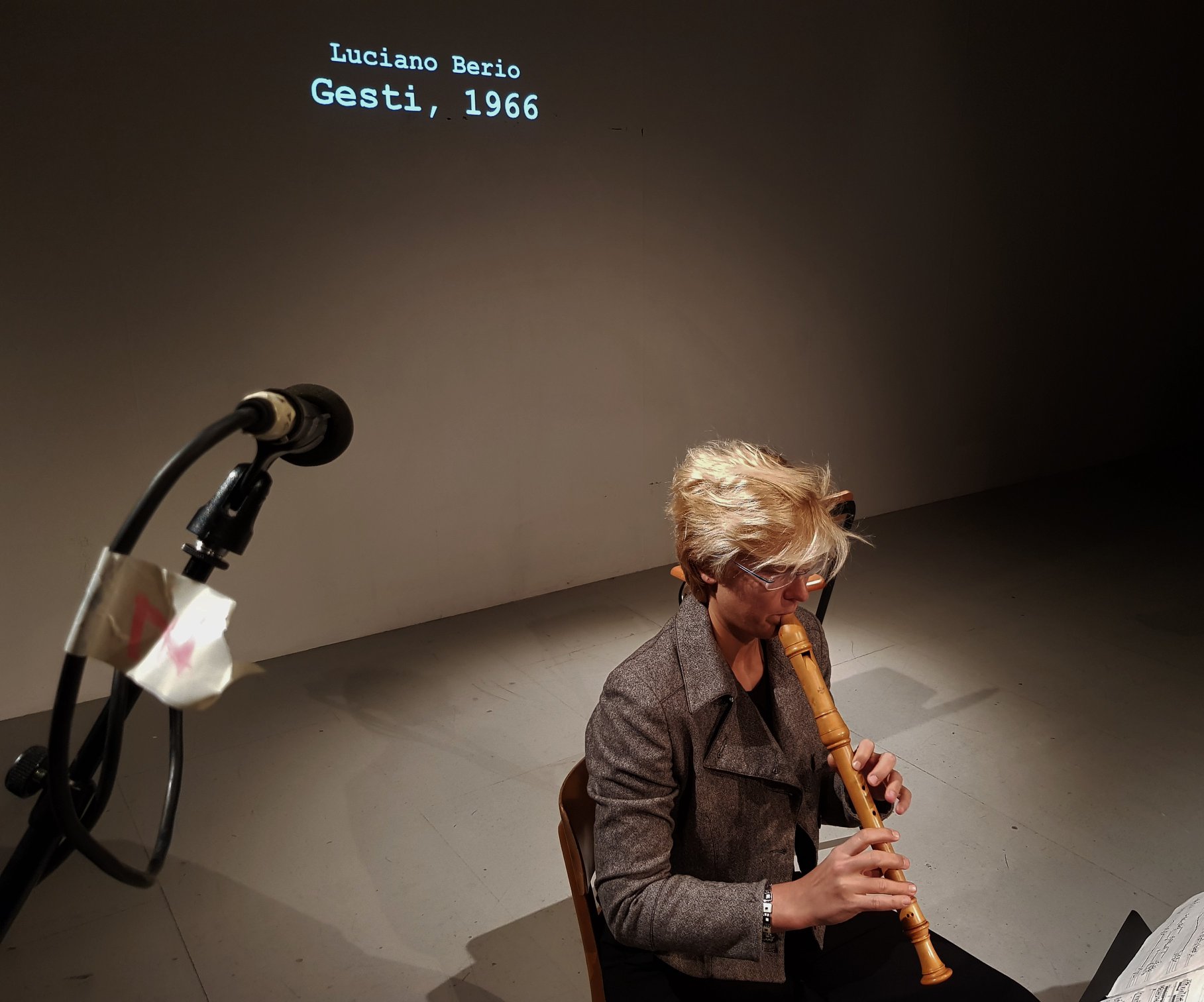
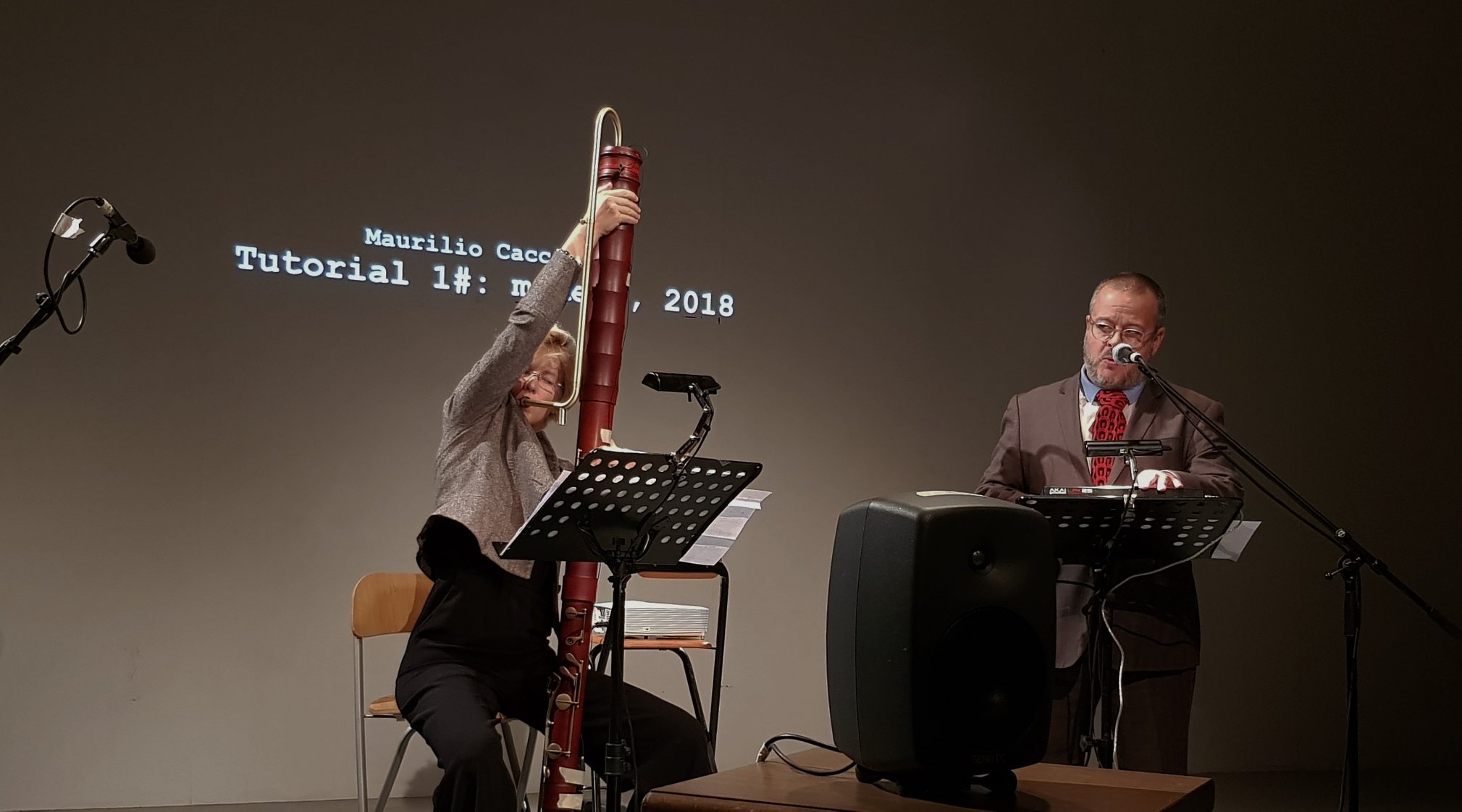
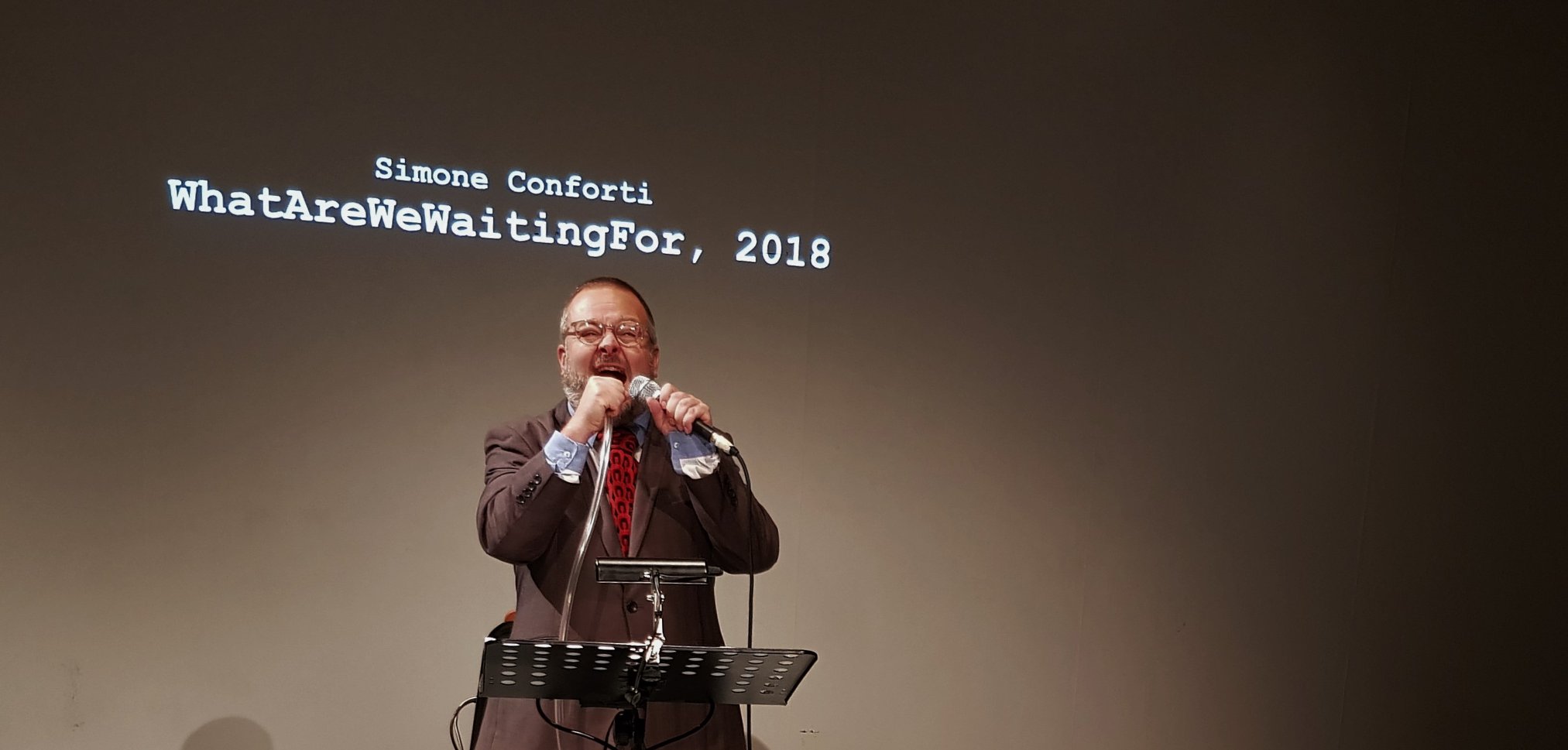
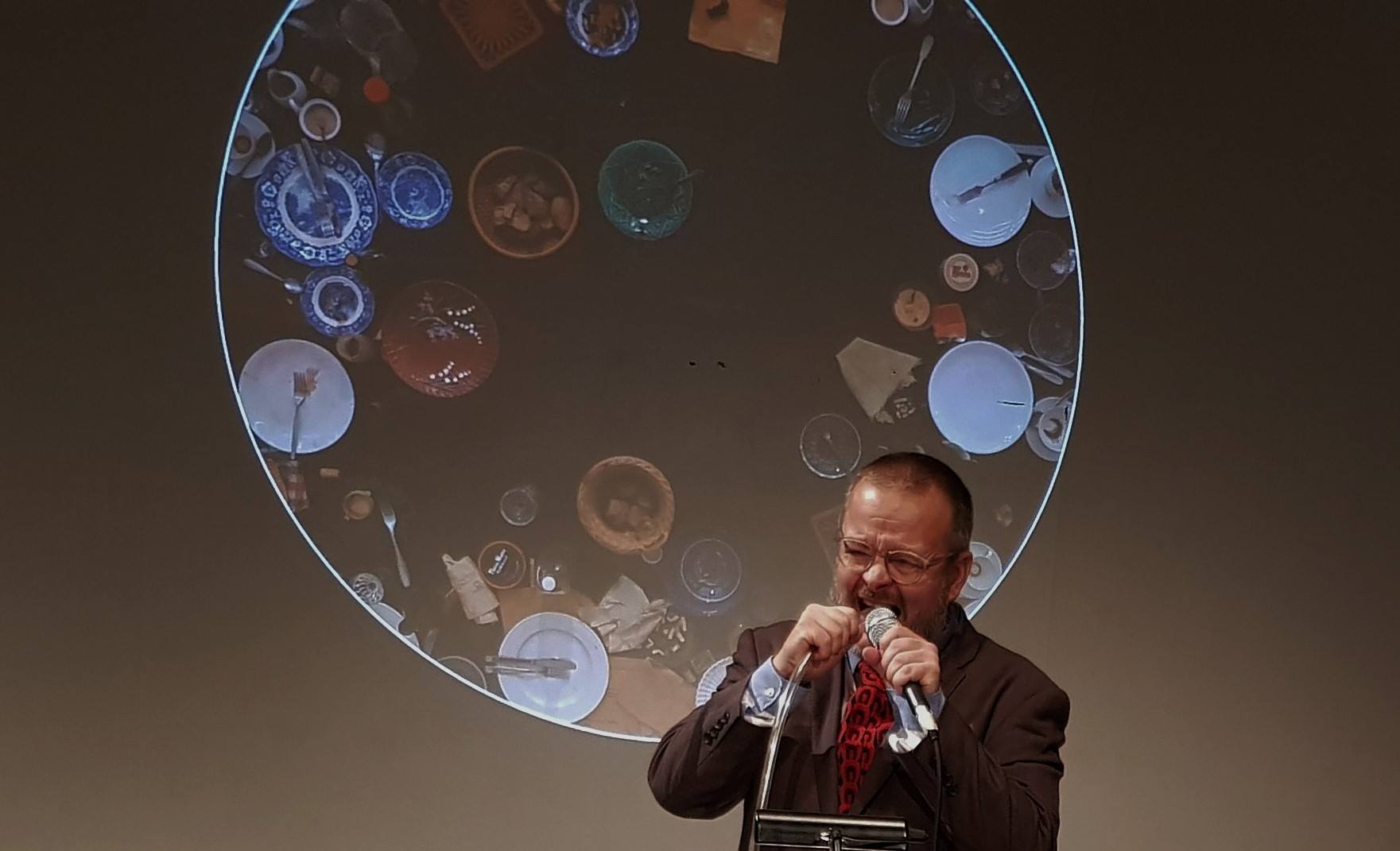
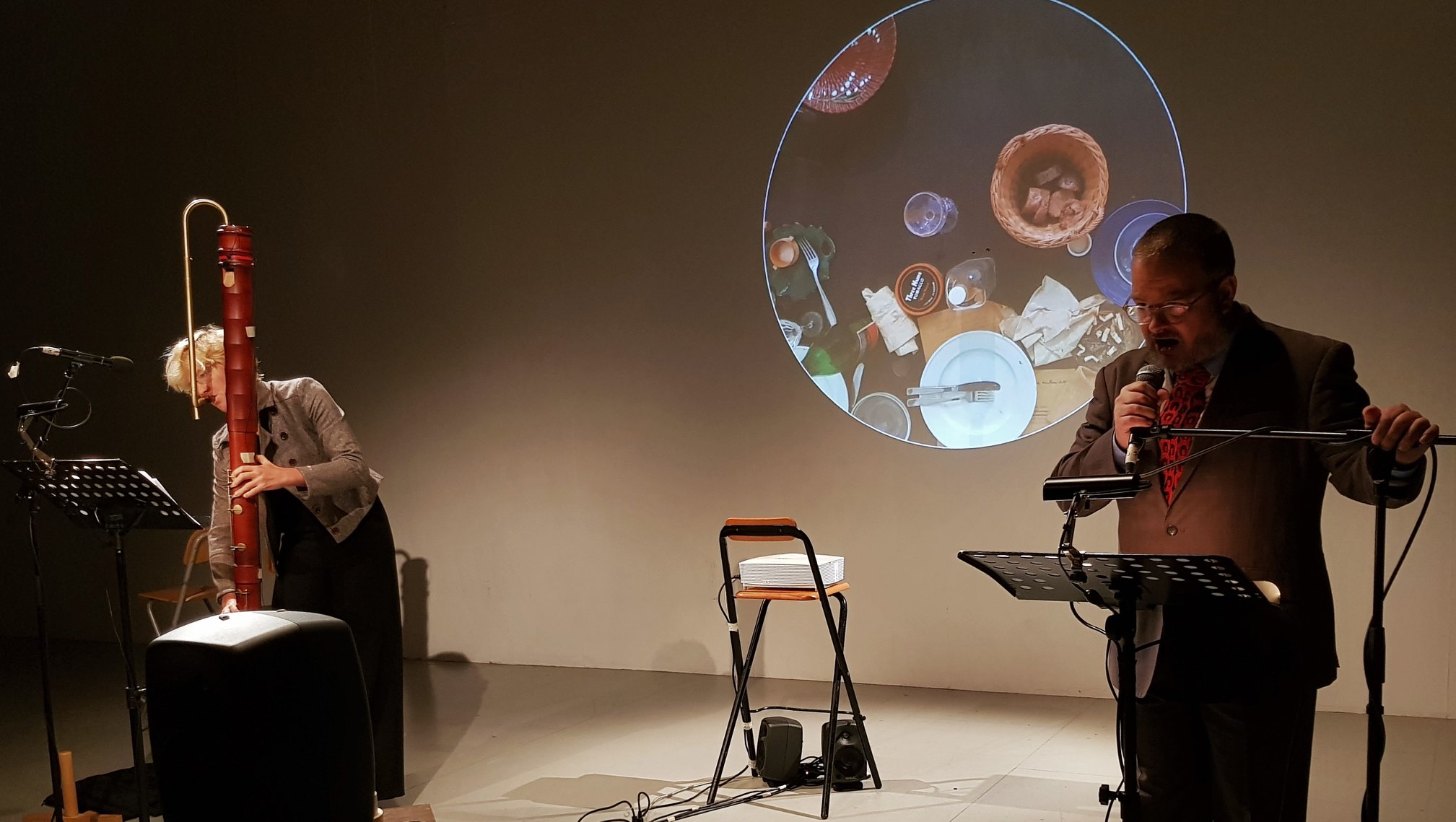
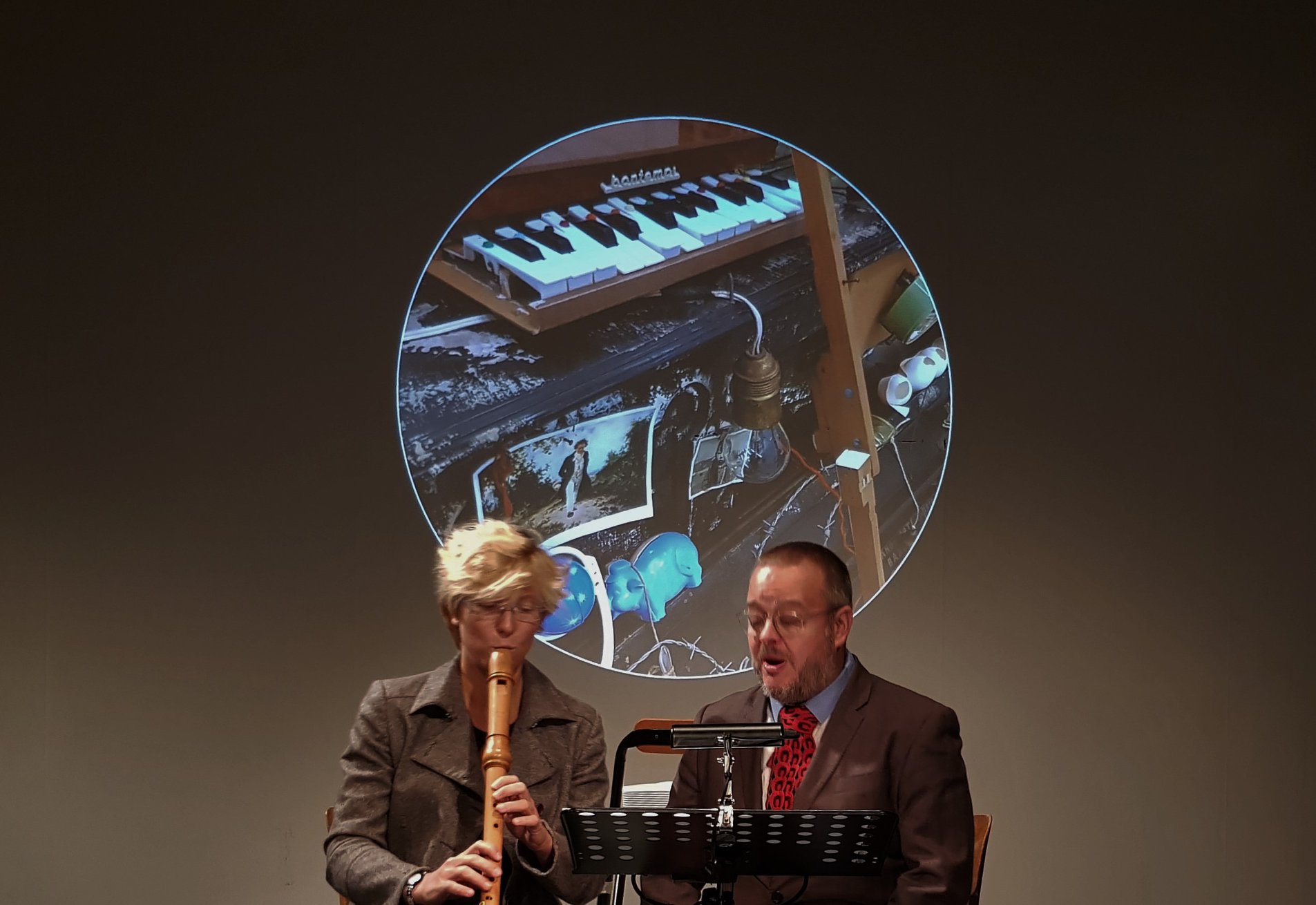
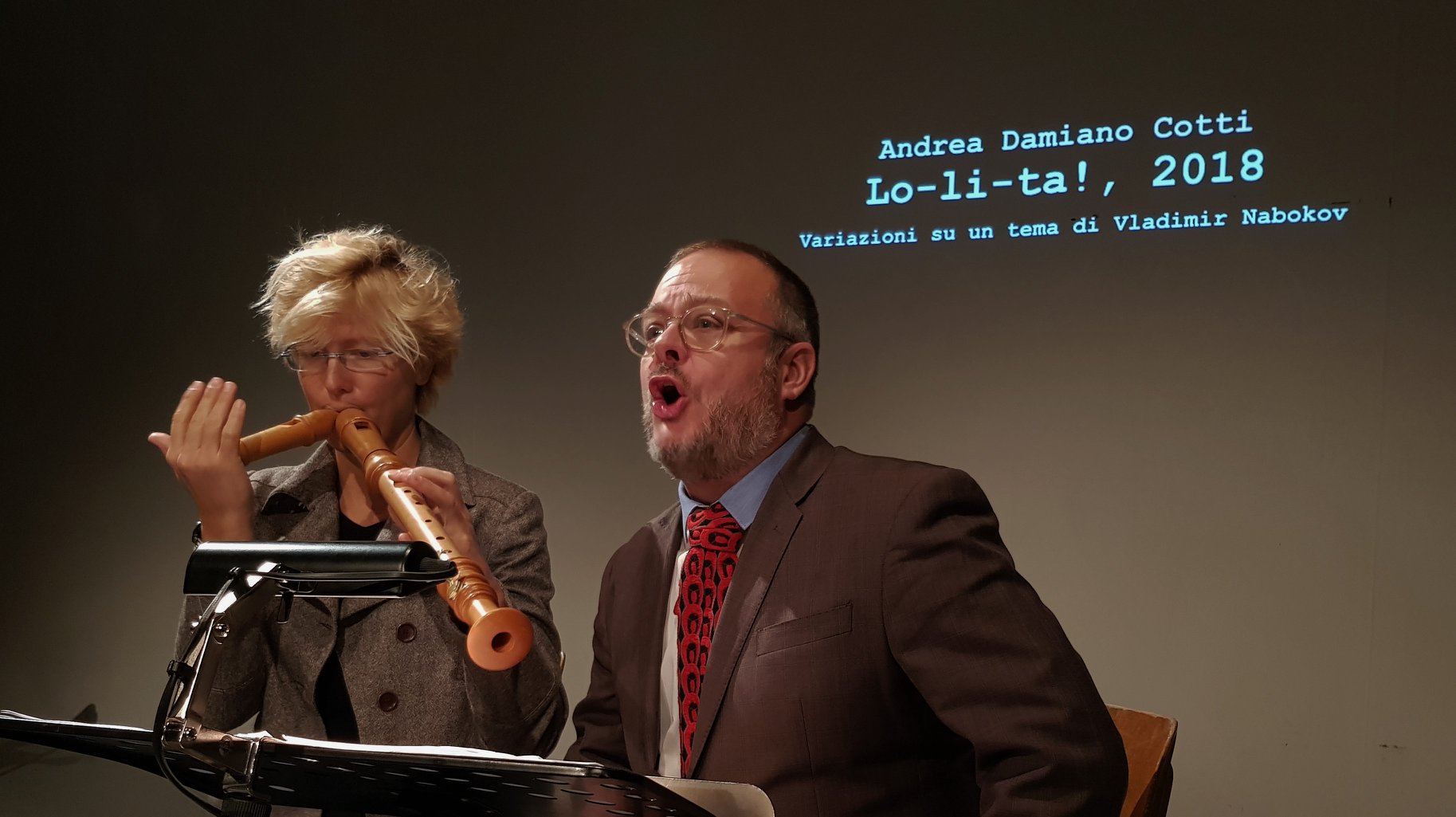
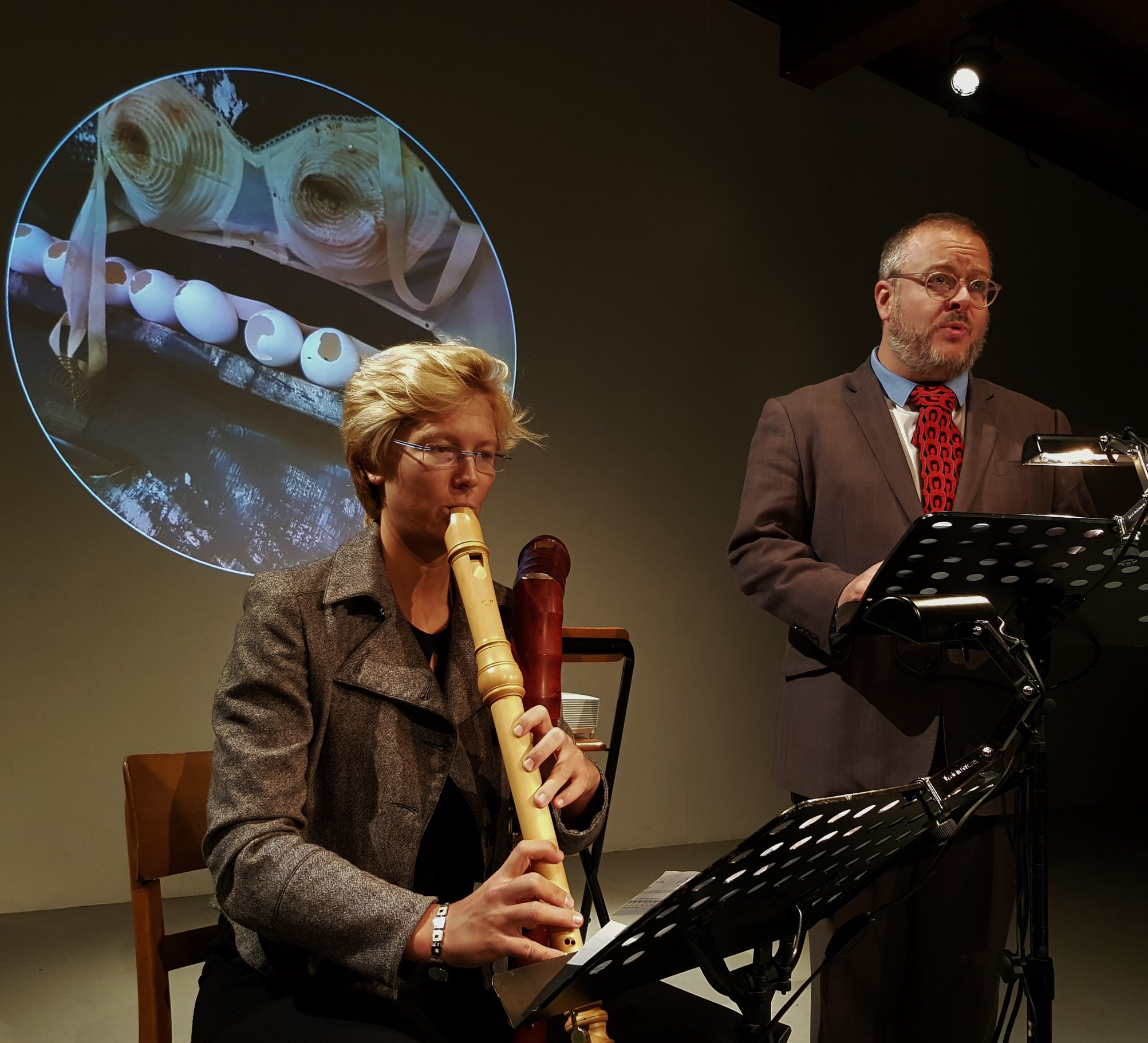
![]()
PRESS
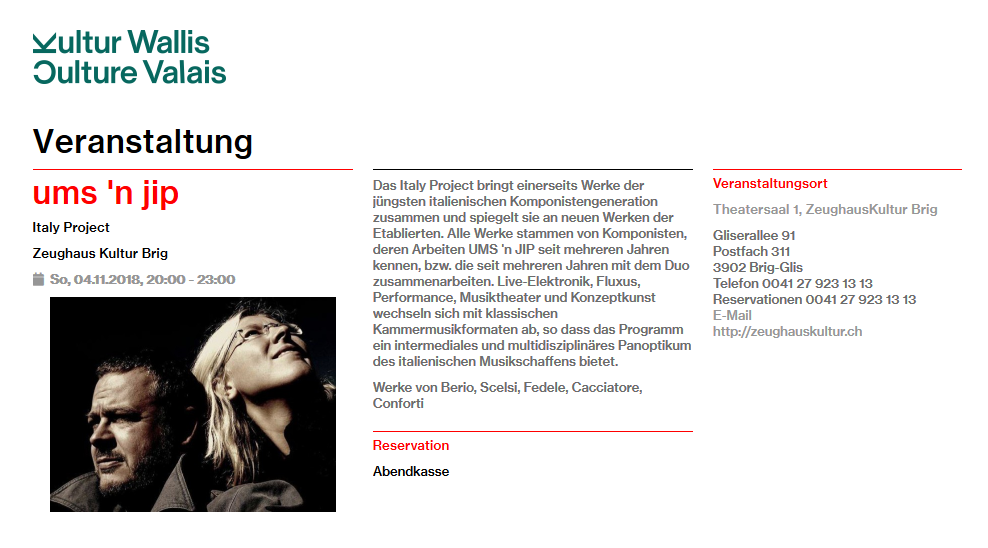
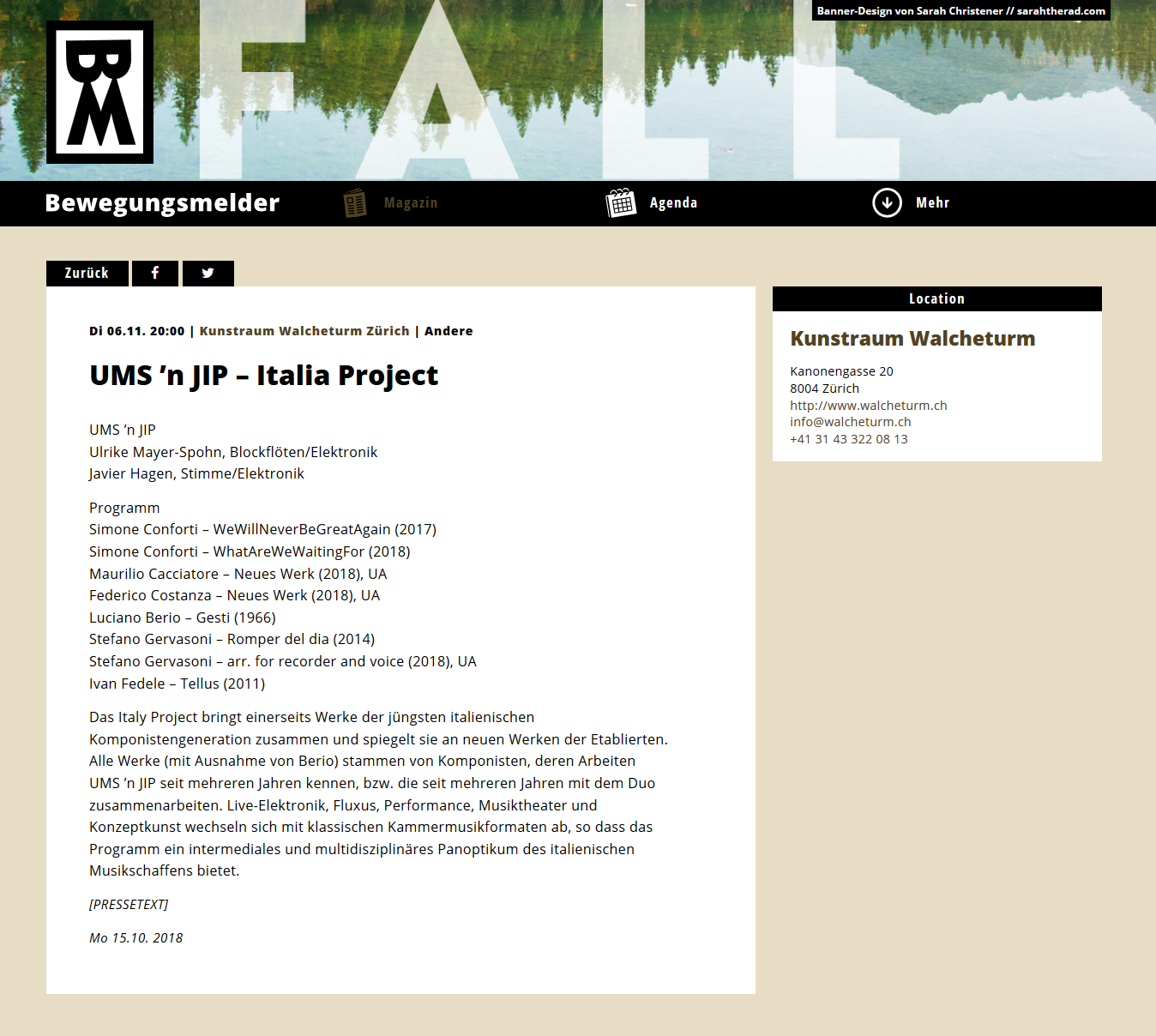
![]()
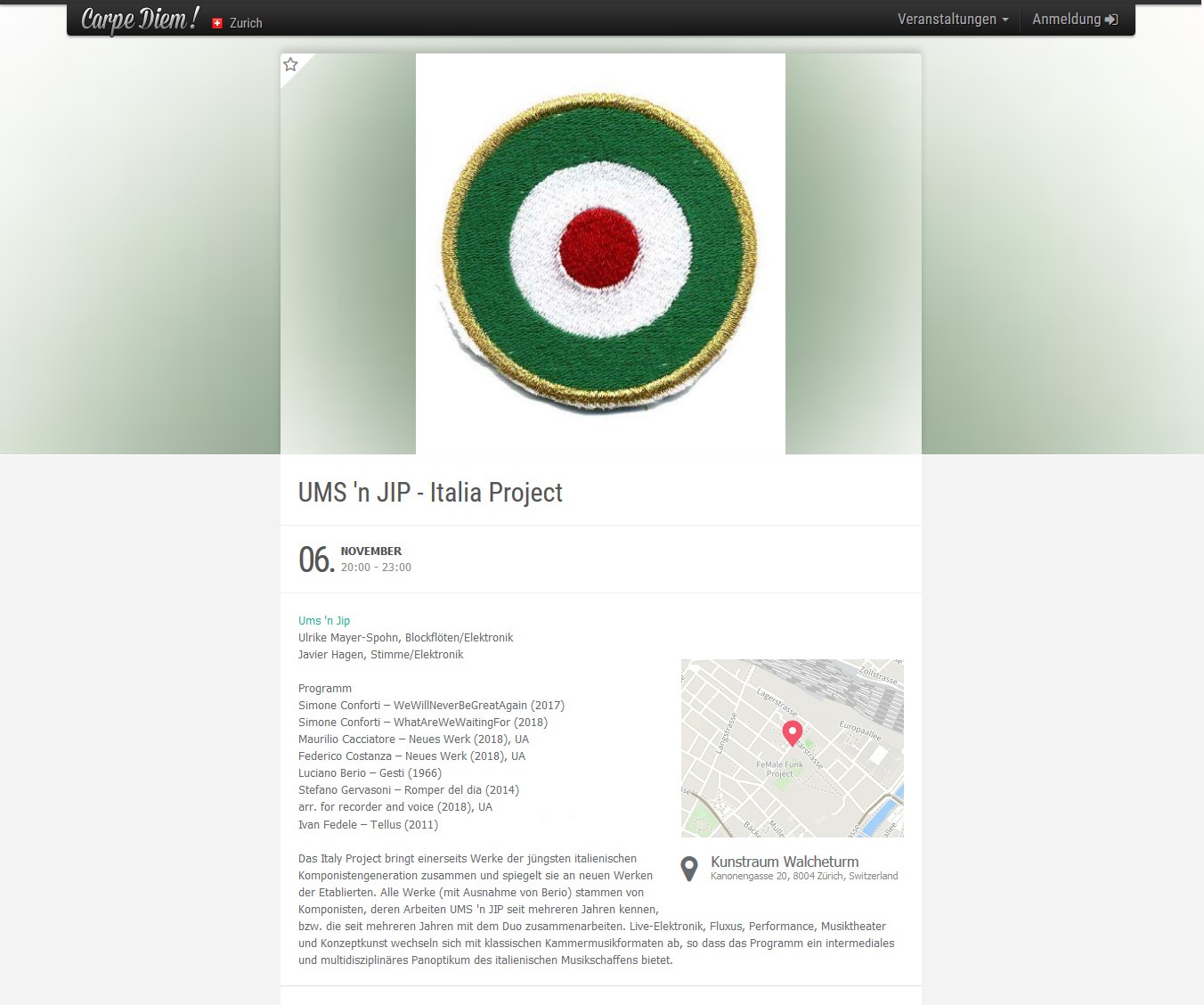
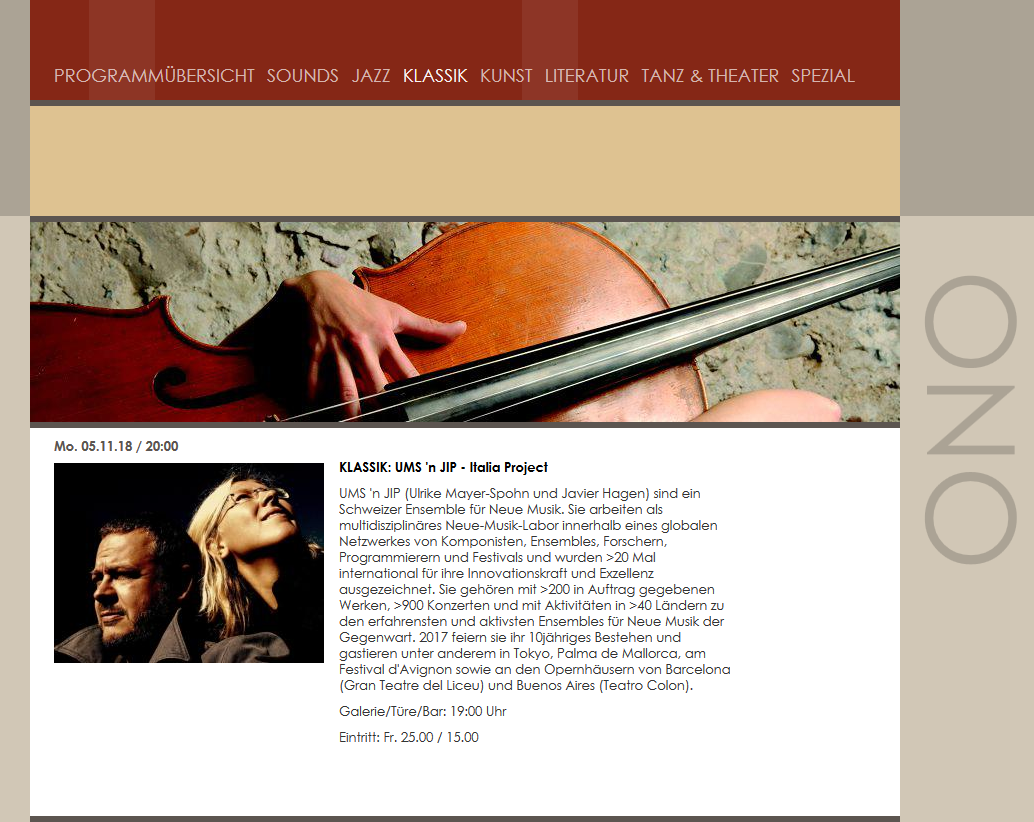
![]()
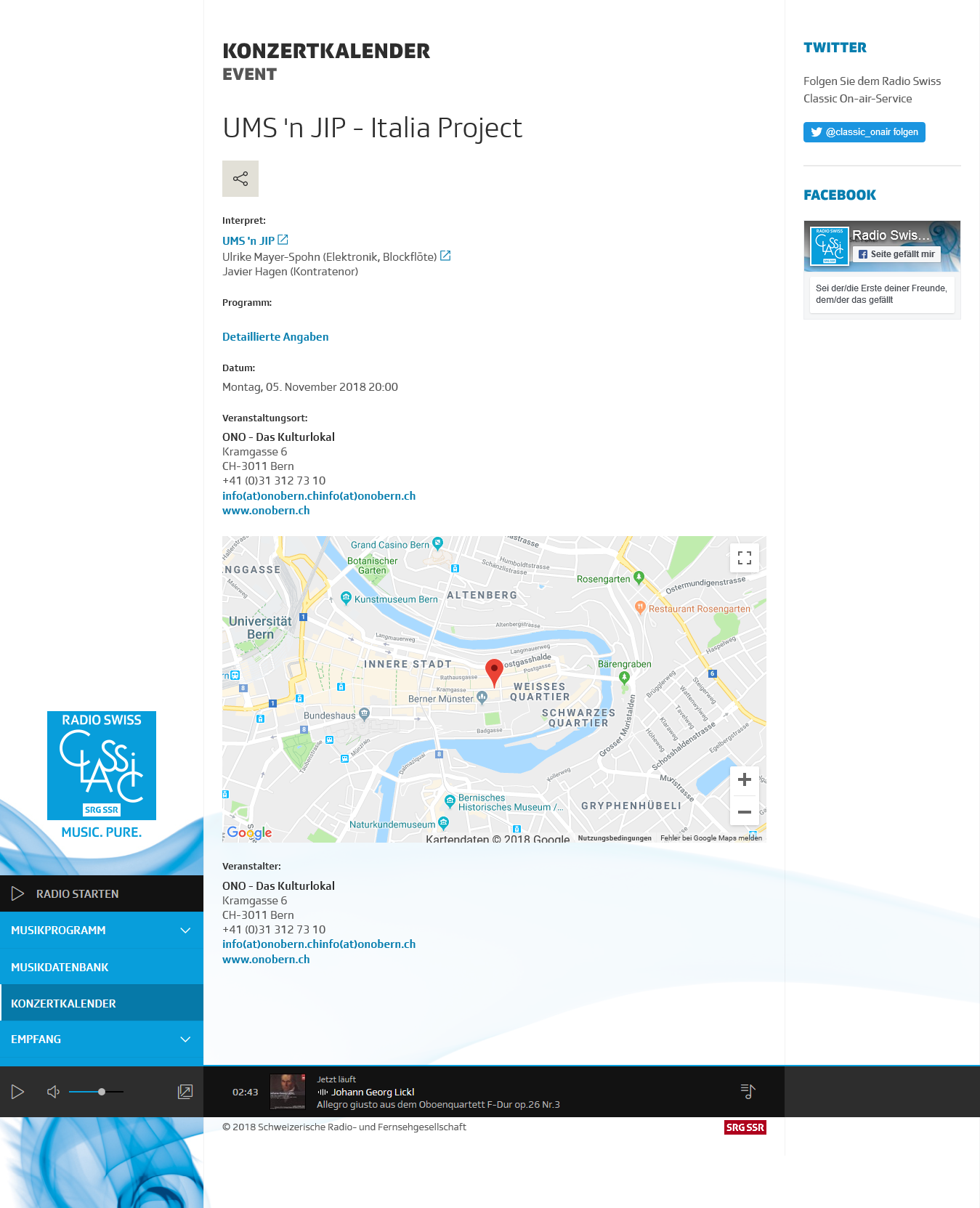
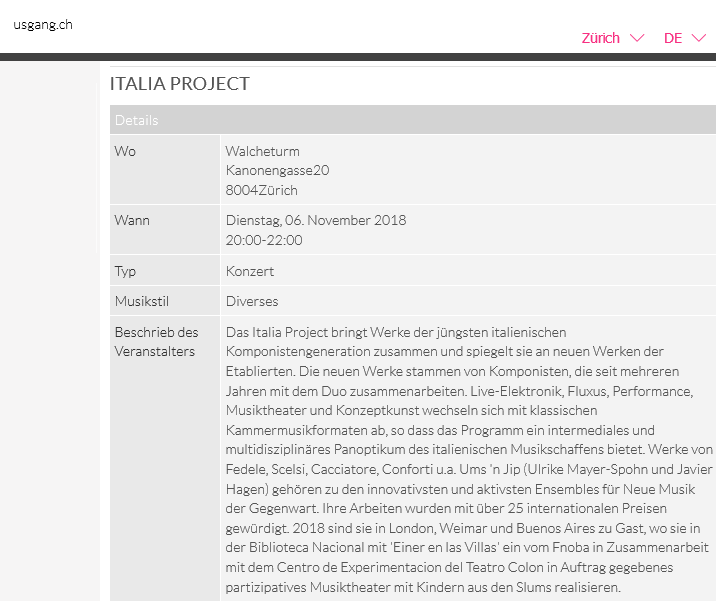
![]()
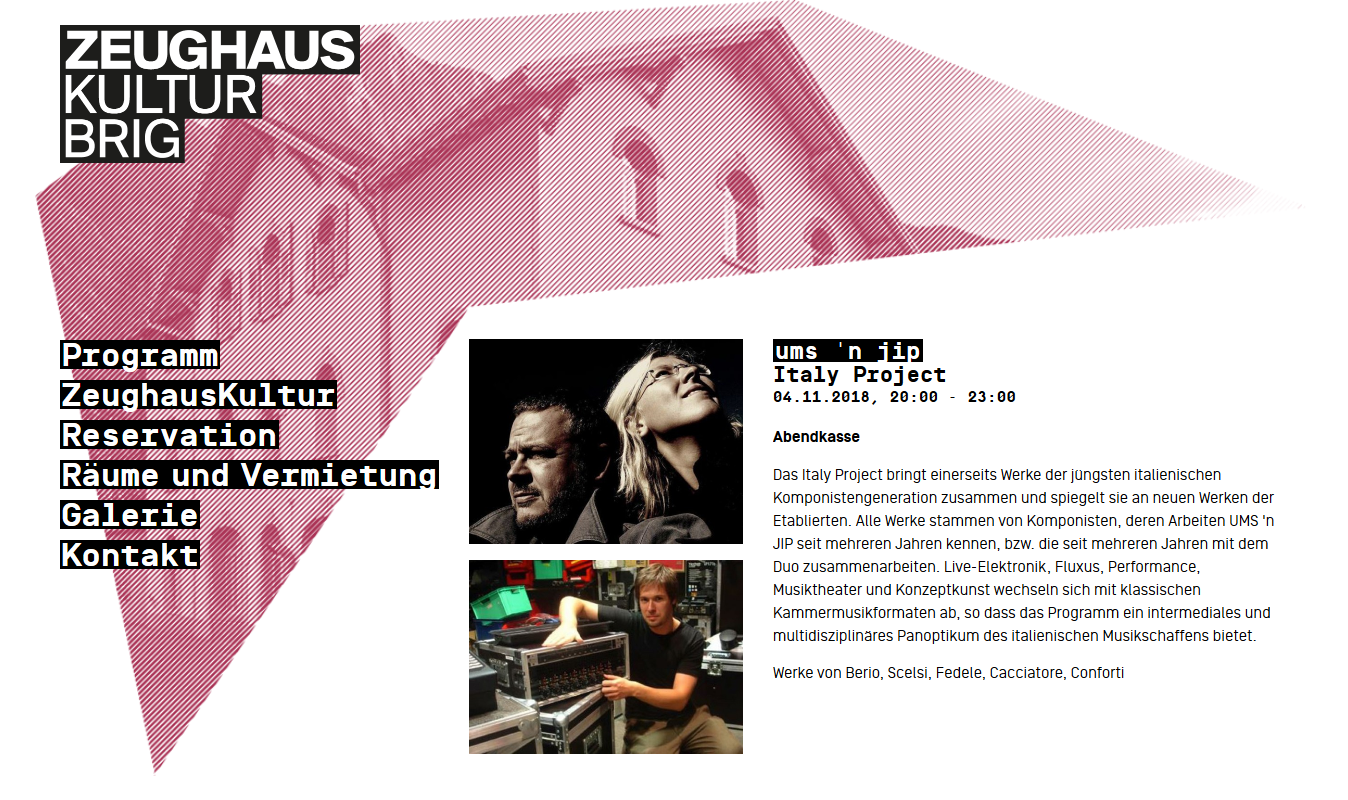
![]()
VIDEOS
![]()
REFERENCES

![]()
SUPPORTS
